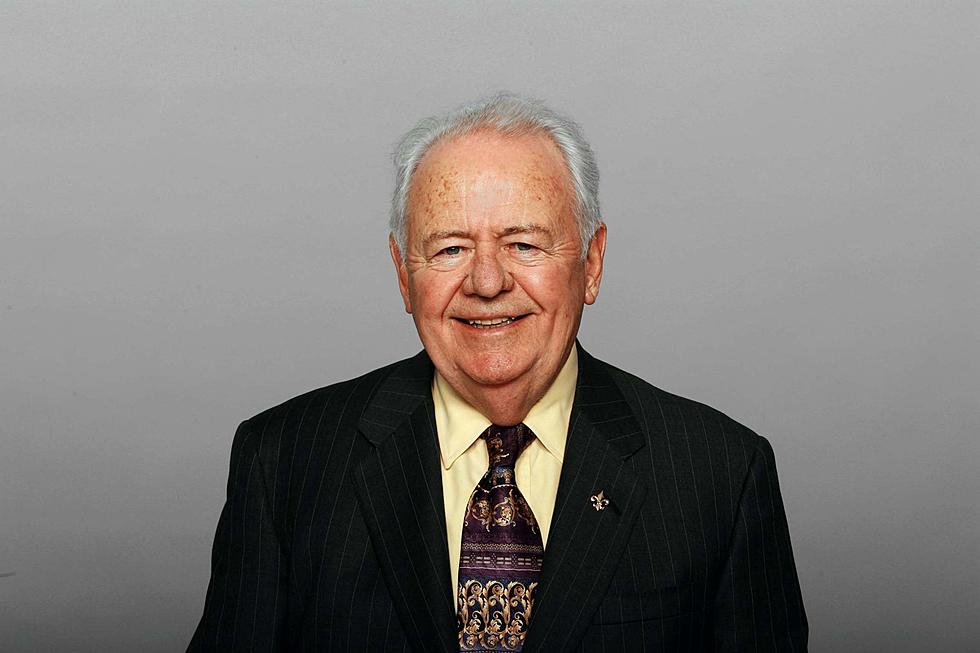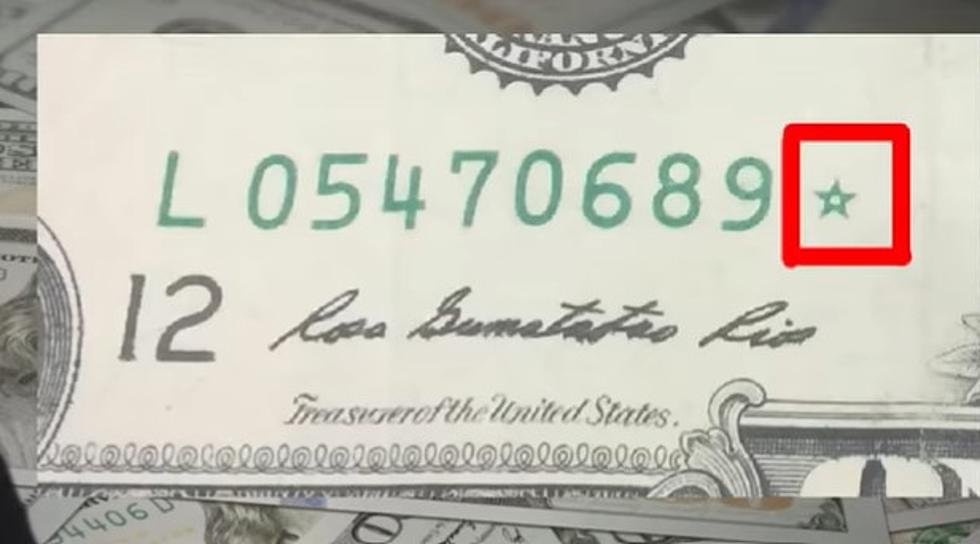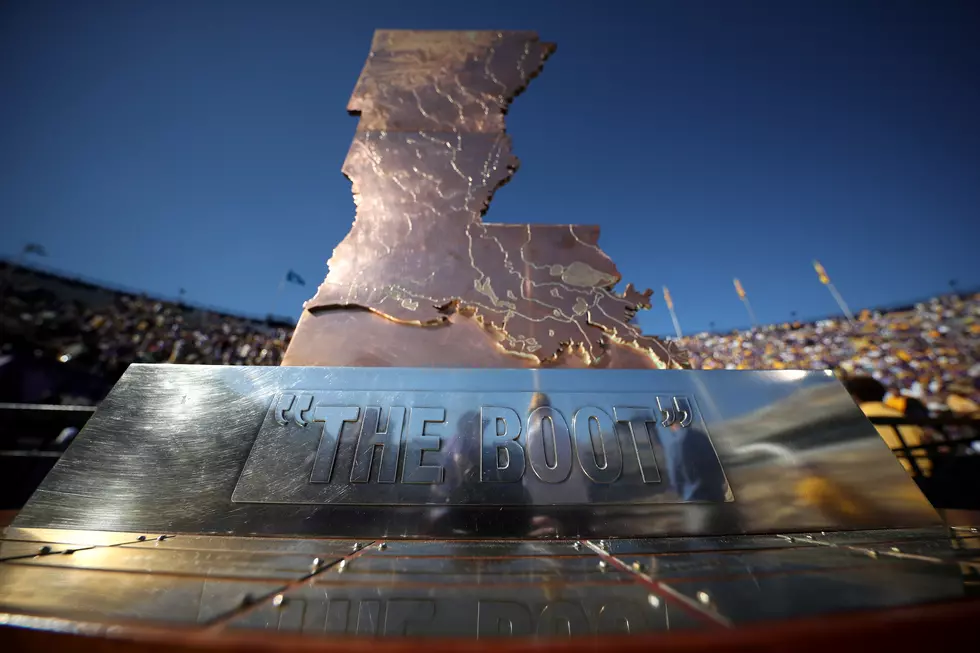
Famous People Buried In Louisiana
Tom Benson - 1927 - 2018
Born in New Orleans, Tom Benson was a car salesman well before he owned an NFL and NBA team. He held several car dealerships throughout the Cresent City. Funny enough, he got word from former Governor Edwin W. Edwards that some big-money investors were planning to buy the Saints and move the team to Jacksonville, Florida. Benson didn't have it. He did as any man would do in that situation. He bought the Saints from John Mecom.
In 1992, Benson tried to acquire the Charlotte Knights A.A. minor league baseball team. The plan was to bring them to New Orleans and rename them the Pelicans. However, the deal fell through when the Denver Zephyrs AAA team relocated to New Orleans, later called the New Orleans Zephyrs. A few years later, he started the Arena Football League with the New Orleans VooDoo, but that business venture went belly up. Then in 2012, Benson bought the New Orleans Hornets from the NBA for $338 million and renamed them the New Orleans Pelicans.
The rest is sports history. Under Benson's ownership, the Saints enjoyed several winning seasons and brought the Super Bowl trophy home to New Orleans in 2010. Tom Benson is buried at Metairie Cemetery in New Orleans.
Ted Lyons - 1900-1986
Lyons was a Captain in the U.S. Marines from Lake Charles, LA. The SWLA native was a Captain in the US Marines and served in World War II. The Captain also happens to be a baseball Hall of Famer who spent his entire 21-year career playing with the Chicago White Sox.
Ted Lyons stats: pitched in 594 games and finished his career with 1073 strikeouts and 260 wins.
He went on to manage the White Sox and was a pitching coach for the Brooklyn Dodgers and the Detroit Tigers. He would later be inducted into Baseball's Hall of Fame in 1955. He is buried at Big Woods Cemetery in Edgerly, LA.
Slim Harpo - 1924-1970
Slim Harpo, who was born James Moore, is an iconic blues musician who recorded from the 50s until the end of his life. Music producer J.D. Miller gave him the nickname "Slim Harpo." Though he had a few nicknames, this one stuck throughout his career.
He had several Top 40 hits, including 'Rainin' In My Heart' 'I'm A King Bee,' and 'Baby Scratch My Back." Harpo became mega-popular, and music had an impact outside of the Blues and R&B charts. The Rolling Stones, Hank Williams Jr., The Grateful Dead, and many others sampled him. He was planning a career comeback, but his life was cut short when he died of a heart attack at 46.
You can visit Slim Harpo at the Mulatto Bend Cemetery in Port Allen.
Mahaliah Jackson 1911 - 1972
She was, without question, one of the most influential vocalists of the 20th century. Born in New Orleans, she was the granddaughter of an enslaved person and grew up in tough times. God was all people had to draw the strength to survive Jim Crow, extreme poverty, and hatred of the deep south.
Her Gospel roots began singing for the Lord at Mount Moriah Baptist Church and gave birth to a career that spanned more than 40 years. She was and still is one of the most revered gospel figures in the country. Her single “Move On Up a Little Higher” made her an international figure in music. She worked with legends in music like Duke Ellington and Thomas A. Dorsey.
The Gospel sound “Just Over the Hill” and “How I Got Over.” She was extremely close to Martin Luther King Jr. and Coretta Scott King. She was instrumental during the Civil Rights Movement and gave King the courage to speak about his dream at the March on Washington in 1963. She was a lion! She was known for her passionate performances and moved crowds into a frenzy every time. President Nixon said at the time of her death in a White House address:
“America and the world, black people and all people, today mourn the passing of Mahalia Jackson. She was a noble woman, an artist without peer, a magnetic ambassador of goodwill for the United States in other lands, an exemplary servant of her God.
You can visit Mahalia Jacksons' grave site at the Providence Memorial Park and Mausoleum in Metairie, LA.
General P.G.T. Beauregard was Creole and born Gustave Toutant Beauregard on a sugar cane plantation in St. Bernard Parish. He was an author, civil servant, politician, inventor, and ironically enough, despite his mixed race, was the fifth most senior officer of the Confederacy. He was widely regarded as starting the Civil War and is famous for designing the Confederate Battle Flag.
Beauregard was famously known for his long public feud with Jefferson Davis over his policies. He attended the United States Military Academy at West Point, New York, and would later be one of the men to urge Jefferson Davis to surrender and end the Civil War. Beauregard Parish is named after him, and following his extensive military career, he spent the rest of his life advocating for Black rights, voting rights, and full equality and integration. He was active in the Reform Party.
He ran Engineer Department called "the Mississippi and Lake defenses in Louisiana," repairing old forts and building new ones on the Florida coast and in Mobile, Alabama. He worked on a board of Army and Navy engineers to improve the navigation of the shipping channels at the mouth of the Mississippi. He created and patented an invention he called a "self-acting bar excavator" to be used by ships in crossing bars of sand and clay.
He was appointed superintending engineer of the U.S. Custom House in New Orleans, a massive granite building sinking unevenly in moist Louisiana. He developed a renovation program, stabilized the structure, and successfully held patents for his invention of the cable car and the system of cable-powered street railway cars.
The former General invented a method of cable-powered street railway cars. Beauregard was recruited as a supervisor of the Louisiana State Lottery Company in 1877, but voters voted against government-sponsored gambling, and the lottery was soon closed down. You can visit the grave of the "Little Black Frenchman" at Metairie Cemetery in New Orleans.
Wayne McLaren 1940-1992
McLaren was a famous actor and stuntman from Texas. The Lone Star native landed several small parts throughout his life, like Gunsmoke and Paint Your Wagon. However, he is most famously known as the "Marlboro Man!" He was the guy in all the Marlboro ads in the 70s.
His campaigning for cigarettes ended drastically after he caught lung cancer. He went from advocating to being at the center of the 'Big Tobacco' lawsuit in the 90s. McLaren is buried at Highland Memory Gardens in Lake Charles, Louisiana.
Dr. John - 1941-2019
Malcolm John Rebennack Jr., better known as iconic music star Dr. John. Regarding stardom, he is quite possibly the most identifiable New Orleans native outside of Louis Armstrong (who isn't buried in New Orleans, believe it or not). Dr. John's music style was a mixture of NOLA blues, funk, jazz, and R&B. He recorded hits such as "Right Place, Wrong Time" and "Iko Iko."
He was a session musician (an artist who backs up the leading recording artist) his entire career, which spanned more than 20 decades. He rose to fame in the late 1960s after the release of his album Gris-Gris (1968) and his appearance at the Bath Festival of Blues and Progressive Music.
Dr. John performed a theatrical show, wearing flamboyant Mardi Gras costumes and VooDoo-inspired ceremonies. He got the idea for his Dr. John persona based on the life of Dr. John, a Senegalese prince who moved to NOLA from Haiti. He was a conjure man, herb doctor, and spiritual healer who came to New Orleans from Haiti. This free man of color lived on Bayou Road and sold a variety of voodoo amulets, gris-gris, and such.
Not only did Dr. John contribute to the recordings of countless artists, he recorded 30 studio albums and 9 live albums during his career. For his contributions to Louisiana Culture, In 2017, November 21st was proclaimed 'Dr. John Day' in the City of New Orleans. Governor John Bel Edwards said the late musician deserved the honor for "embodying the culture of the state from New Orleans to the Bayou."
Dr. John is buried at Saint Louis Cemetery 1 in New Orleans.
Willie Davenport was an American Veteran and Olympic superstar. He joined the U.S. Army out of high school and was stationed in Germany, where he joined a local track club. He actually an Army Private before making the U.S. Olympic trials, where he ran the 110-meter hurdles at the Tokyo 1964 Olympic Games. He graduated from Southern University A&M and made history in track and field as one of the world's greatest hurdle runners.
He won Olympic gold medals in the 110-meter hurdles & bronze and competed in 5 Olympic games. In 1980, he joined teammate Jeff Gadley and competed as a member of the U.S. Bobsled team in the Lake Placid Winter Games. They finished 12th despite Davenport never riding a bobsled until two months before the event. The two men became the first Black Americans in U.S. Olympic Winter Games history to compete in a four-man bobsled competition.
He placed fourth in the 110 hurdles in the Munich 1972 Olympic Games, narrowly missing the medals, then remarkably made a fourth consecutive Summer Games and won bronze in the Montreal 1976 Olympic Games despite knee surgery the previous year that a doctor had said would end his running career.
The track legend was honored as one of the country’s 100 Golden Olympians before the Atlanta 1996 Olympic Games. Willie Davenport was a Colonel in the U.S. Army National Guard at the time of his death in 2002. He passed away from a heart attack at Chicago's O'Hare Airport. He was 59. You can visit his grave at Roselawn Memorial Park in Baton Rouge, Louisiana.
Bill Evans - 1929-1980
Jazz Pianist. His mother enrolled him in classical piano lessons at age six. He attended Southeastern Louisiana University on a music scholarship and graduated in 1950. Soon after, Evans went on tour with the iconic Billie Holiday and her band, led by Herbie Fields.
Bill Evans worked with jazz greats such as Charles Mingus and Art Farmer throughout his music career. His debut album included one of his most memorable compositions, "Waltz for Debby." In 1958, he joined Miles Davis' sextet. In 1959 he formed a jazz trio with Scott LaFaro on bass and Paul Motian on drums. Evans would go on to release several albums, winning a Grammy for "Conversations with Myself."
His 1971 "The Bill Evans Album" recording picked up two Grammies. His final project was "The Paris Concert." 1980 Evans succumbed to cirrhosis, hepatitis, pneumonia, and a bleeding ulcer. He was only 51. The Jazz Great is buried next to his elder brother, who had died one year before, at Roselawn Memorial Park in Baton Rouge.
Billy Cannon - 1937-2018
Billy Cannon is one of the most well-known LSU Tigers of all time. Not only was he a vital component of the 1958 perfect season that led to LSU sharing the National Championship, but he was a two-time All-American and a Heisman Winner. His Halloween Night punt return in 1959 against Ole Miss is one of the most famous plays in the history of LSU. He went on to play 11 years professionally in both the AFL and NFL.
Despite some troubles with the law following his playing career, he is widely beloved for his contributions to the game and was voted into the College Football Hall of Fame in 2008. He is buried at Green Oaks Cemetery in Baton Rouge.
Rodolphe Lucien Desdunes - 1849-1928
Rodolphe Lucien Desdunes was an American Author, Historian, Poet, and Civil Rights Activist. During his life, he fought against the social injustices during Reconstruction Era. He advocated for freed enslaved people and equal rights.
He famously defended a shoemaker named Homer Plessy in the landmark Plessy v. Ferguson case. He was a mixed-race man who bought a first-class train ticket but was told to sit in the 'colored' section, which he refused to do. He was dragged off the train and arrested for violating the "Separate But Equal" law of the Train Car Act.
His case went all the way up to the Supreme Court, but the court upheld the "Separate But Equal" law solidifying the Jim Crow era. Desdunes continued to advocate for equal rights despite the loss. He also published a couple of poetry and history books, including "Nos Hommes et Notre Histoire."
Rodolphe Lucien Desdunes is buried at the historic Stain Louis Cemetery Number 2 in New Orleans.
Soulja Slim - 1977-2003
James Adarryl Tapp Jr. was a rapper better known as Soulja Slim. His solo debut Soulja Fa Lyfe was released in 1994 by Parkway Pumpin' and Hype Enough Records. In 1995, he released the four-song EP Darkside on Hype Enough Records. That same year, the song "You Got It" appeared on a No Limit Records double-CD compilation, Down South Hustlers.
He changed his stage name to Tapp in 1998 and released "Give It 2 'Em Raw" on No Limit, featuring the singles "Street Life" and "From What I Was Told." The album debuted at number 13 on the Billboard in the first week.
The success was short-lived after he was convicted of armed robbery and sentenced to 3 years. He dropped one more album on the No Limit Label after his release. The Streets Made Me.
Then launched his label, Cut Throat Comitty Records, and released his final album, Years Later...A Few Months After. His biggest hit came in 2004 when he collaborated with fellow NOLA rap star Juvenile to make the song "Slow Motion." Released on Juvenile's album, Juve the Great, the tract shot to #1, but Tapp would not get enjoy the song's success.
Tragically, the rapper was shot to death in the front yard of his parent's house in 2003. He was only 26. Tapp is buried at Mount Olivet Cemetery in New Orleans.
Best Looking State Patrol Cars In (Almost) Every State
More From 107 JAMZ









